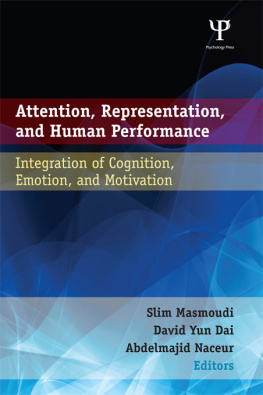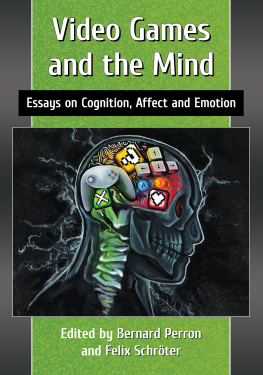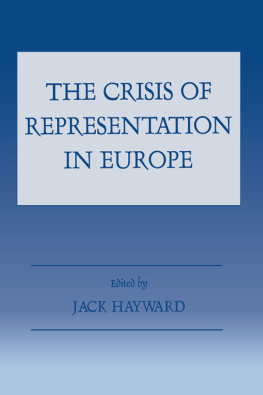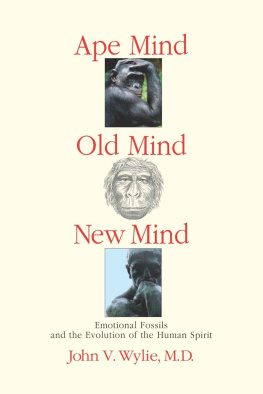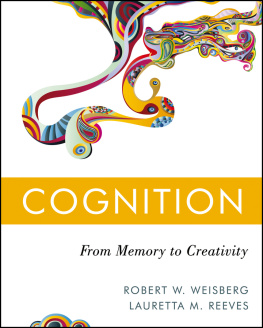
Attention, Representation, and Human Performance
Attention, Representation, and Human Performance
Integration of Cognition, Emotion, and Motivation
Slim Masmoudi
David Yun Dai
Abdelmajid Naceur
Editors

Psychology Press
Taylor & Francis Group
711 Third Avenue
New York, NY 10017
Psychology Press
Taylor & Francis Group
27 Church Road
Hove, East Sussex BN3 2FA
2012 by Taylor & Francis Group, LLC
Psychology Press is an imprint of Taylor & Francis Group, an Informa business
Printed in the United States of America on acid-free paper
Version Date: 20111007
International Standard Book Number: 978-1-84872-973-5 (Hardback)
For permission to photocopy or use material electronically from this work, please access www.copyright.com (http://www.copyright.com/) or contact the Copyright Clearance Center, Inc. (CCC), 222 Rosewood Drive, Danvers, MA 01923, 978-750-8400. CCC is a not-for-profit organization that provides licenses and registration for a variety of users. For organizations that have been granted a photocopy license by the CCC, a separate system of payment has been arranged.
Trademark Notice: Product or corporate names may be trademarks or registered trademarks, and are used only for identification and explanation without intent to infringe.
Library of Congress Cataloging-in-Publication Data
Attention, representation, and human performance : integration of cognition, emotion, and motivation / [edited by] Slim Masmoudi, David Yun Dai, Abdelmajid Naceur.
p. cm.
Includes bibliographical references and index.
ISBN 978-1-84872-973-5 (hardback)
1. Cognitive psychology. 2. Emotions and cognition. 3. Motivation (Psychology) 4. Cognition. I. Masmoudi, Slim. II. Dai, David Yun. III. Naceur, Abdelmajid.
BF201.A88 2011
153--dc23 2011020517
2011020517
Visit the Taylor & Francis Web site at
http://www.taylorandfrancis.com
and the Psychology Press Web site at
http://www.psypress.com
This little book is for
Imen Masmoudi
My wife and best friend
And the sons I adore Karim and Ahmed
Ill love you forever
And ever and ever
And ever and ever
And fifteen days more
SM
To Lily and my children Vivian and Victor
DYD
To Monia and my children Oumayma and Arij
AN
Contents
Preface
The field of psychological sciences has witnessed an increasing tendency toward specialization, even compartmentalization. At the same time, many intriguing psychological phenomena demand an understanding that entails integration of cognitive, emotional, and motivational processes situated in particular functional and social contexts. To combat compartmentalization, to formulate meaningful theories that can explain real-life behavioral and psychological phenomena, we put together this volume, in which a range of psychological problems is tackled from an integrative perspective.
This project was launched after two conferences held at the University of Tunis in 2007 and 2009, respectively, on the topic of integration of cognition, emotion, and motivation (CEM). Invited keynote speakers, such as George Sperling, Irving Biederman, David Yun Dai, Klaus Scherer, Jacques Tardif, Alan Baddeley, Art Markman, Johnmarshall Reeve, and Bernard Rim, and many other presenters included scholars from all over the world. Particularly noteworthy is the fact these were rare occasions when English-speaking and French-speaking scholars came together to share their research programs and findings. Despite different research foci and methodologies, there was a strong consensus that we need to understand a psychological phenomenon in all its complexity, involving neural, psychological, and social dimensions; involving perception and conception and decision processes; involving motivation, emotion, and cognition in complex interaction. Put in the larger context of the emergence of integration efforts on many fronts of psychology and cognitive and affective neurosciences, the collection of the research work reported in this volume from the labs across the Atlantic Ocean and the Mediterranean Sea represents a unique contribution to the advance of the field.
With the Introduction providing an overview, the volume is divided into three parts: (a) attention, including sensory and perceptual processes that allow the person to catch the information from the world; (b) representation, including multiple formats of coding and abstracting information; and (c) performance, including enactive thought processes, skill execution, and problem solving. The organization of the three parts in this order represents our understanding of the increasing organized complexity at each level of cognition. As we move from to Section III, we can see how higher-order processes build on and interact with lower-order processes and how motivation and emotion are also represented in a different manner depending on the level of cognitive processes under investigation.
, Attention, features Alan Baddeleys discussion of the role of emotion in the context of his now-classic theory of the cognitive apparatus. Frhholz and Grandjean provide an updated account of conscious and unconscious processing, informed by state-of-the-art neuroimaging research. Their discussion is followed by Mermillods elaboration on an embodied cognition perspective as compared with an associative network perspective. In comparison, Gil and Droit-Volets chapter has a more circumscribed focus. They give an intriguing account of their research on how processing of positive and negative emotions influence ones time perceptions.
, Performance, Russell, Dunbar, and Gobet attempt to elucidate the functional and adaptive value of religion in problem solving through the analysis of two distinct forms of emotion: euphoria and dysphoria. Clment incorporates the appraisal theories of emotion into the otherwise cognitive theory of problem solving, such that emotion serves an adaptive role of evaluating current situations in problem solving, such as an impasse. Bonnardel examines how different types of stimuli with distinct valences and associations differentially evoke inspirations in design ideation. Masmoudi proposes a decision model that is based on interaction of percepts, concepts, and decisions, on one hand, and of cognition, emotion, and motivation on the other, a model that is, he argues, more realistic than the ones based purely on logic and reason. The volume concludes with an epilogue by Dai and Sun, who use the CLARION architecture to frame their comments on each chapter as well as the unity and structure of mind that are implicated by the organization of the volume.
This volume is intended to reach out to basic and applied psychological researchers, cognitive and affective scientists, learning scientists, biologists, sociologists, neuropsychological researchers, and philosophers, who have an interest in an integrated understanding of the mind at work, particularly pertaining to explanations of real-life phenomena that have social and practical significance. A distinct feature of this volume is that most research involved is heavily built on neuropsychological evidence, while loyal to the experimental tradition with its focus on functional behavior in various situations and conditions that mimic or resemble real life. The viability of this approach to doing cutting-edge research that is relevant and applicable to many real-life phenomena should also make this body of research useful for a wide range of human endeavor, from education to industrial psychology.
Next page
